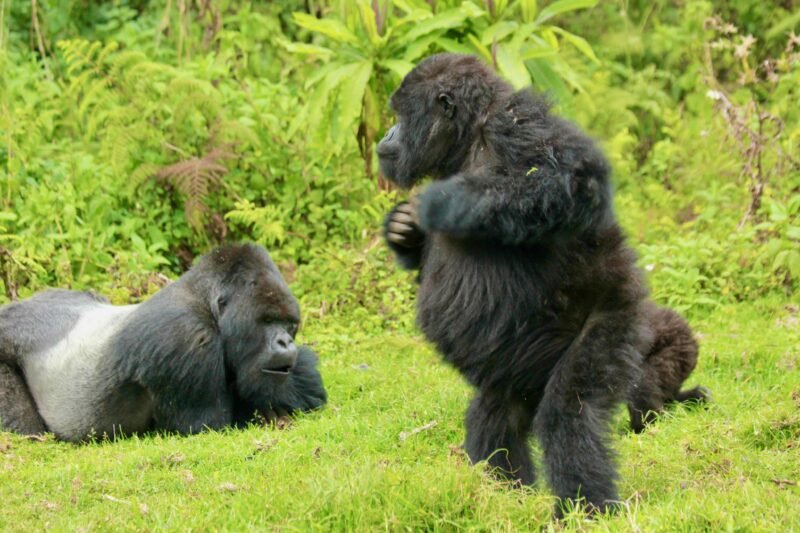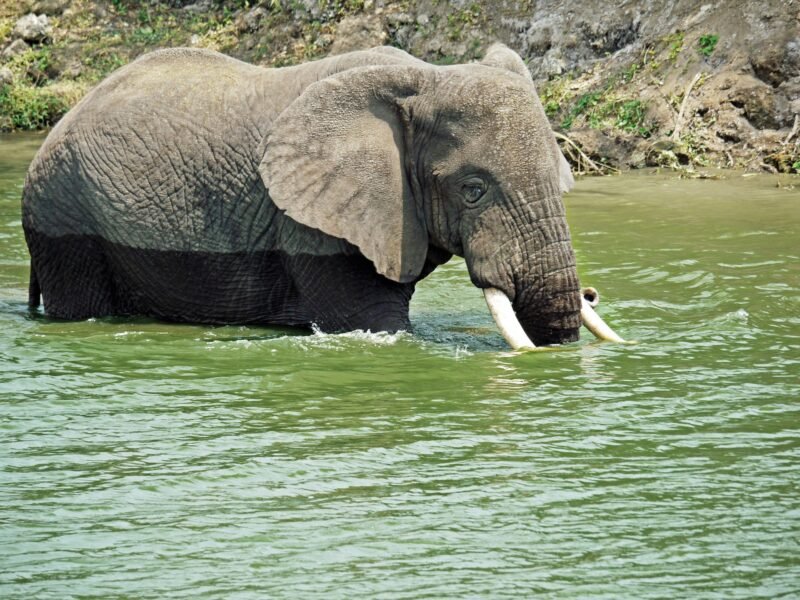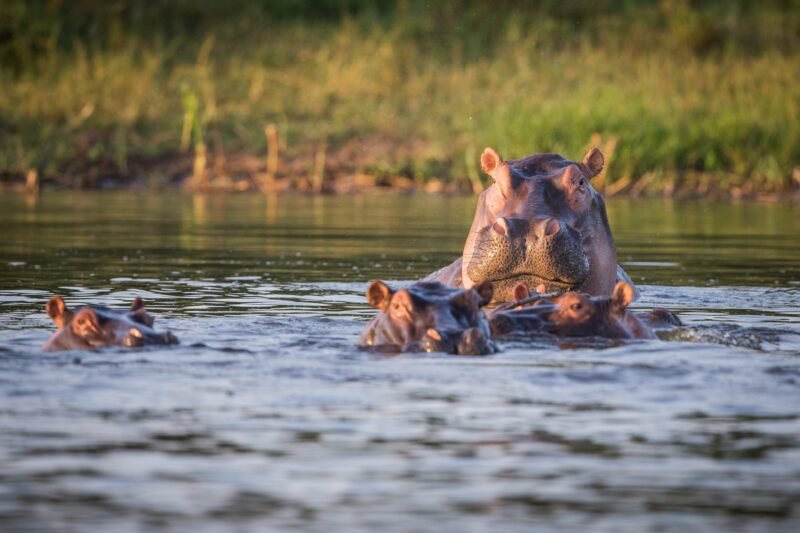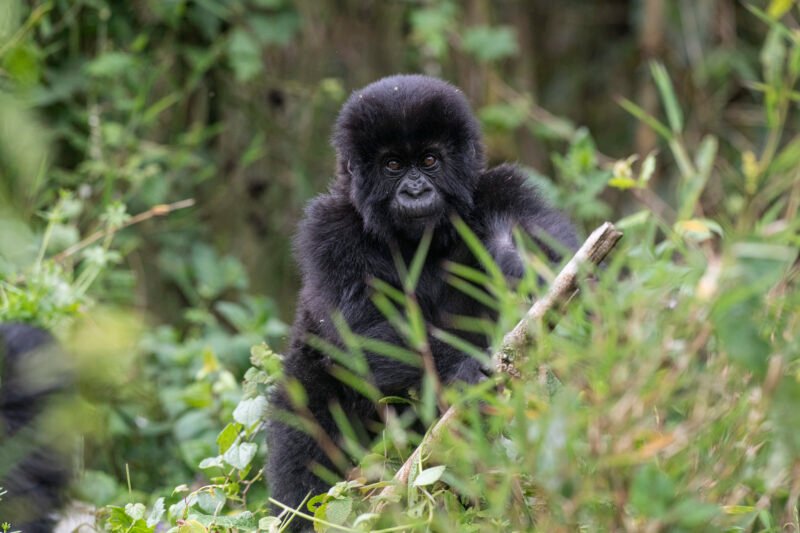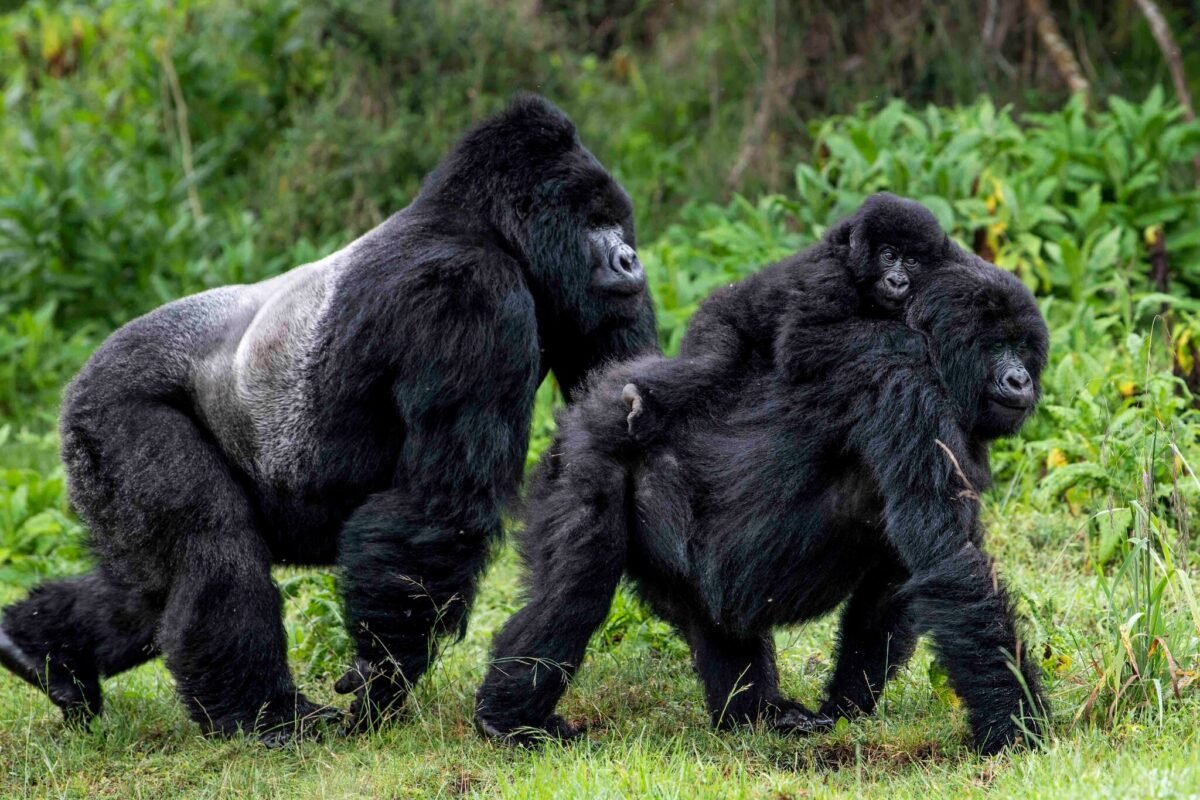
The majestic mountain gorilla, one of the world’s most powerful yet endangered primates, roams the misty forests of East Africa with strength, grace, and surprising gentleness. As visitors prepare for thrilling gorilla trekking adventures in Rwanda, Uganda, or the Democratic Republic of Congo, one of the most frequently asked questions is: How much does a mountain gorilla weigh?
How much does a mountain gorilla weigh? (Average Weight of a Mountain Gorilla)
Mountain gorillas (Gorilla beringei beringei) exhibit notable differences in size and weight depending on age and gender. On average:
- Adult male mountain gorillas, often referred to as silverbacks due to the silver hair on their backs, weigh between 140 to 200 kilograms (310 to 440 pounds). In rare cases, a fully mature silverback can weigh even more.
- Adult female mountain gorillas are significantly smaller, typically weighing between 70 to 120 kilograms (150 to 265 pounds).
Newborn gorillas, in contrast, are quite tiny and delicate, weighing just about 1.8 to 2 kilograms (4 pounds) at birth.
Why Are Silverbacks So Hefty?
Silverbacks are not only the largest members of their troop but also the protectors, leaders, and decision-makers. Their impressive weight is a result of their muscular build, thick bone structure, and constant foraging on fibrous plants and fruits. This physical dominance helps them defend their family group from potential threats, including other rival gorillas or predators.
Despite their immense size and strength, mountain gorillas are generally gentle creatures. They rarely show aggression unless provoked or when their troop is in danger.
What Contributes to Their Size?
Mountain gorillas consume large amounts of vegetation daily — up to 30 kilograms (66 pounds) of leaves, stems, shoots, and fruit. This plant-based diet, rich in fiber and low in calories, is surprisingly effective in building muscle mass due to their efficient digestive systems and slow, deliberate lifestyle.
Their natural habitat — the high-altitude forests of Volcanoes National Park in Rwanda, Bwindi Impenetrable Forest and Mgahinga Gorilla National Park in Uganda, and Virunga National Park in the DRC — provides plenty of the nutritious vegetation they need to maintain their weight and health.
A Fascinating Encounter on Safari
Observing a silverback up close during a gorilla trekking tour is a humbling experience. Standing over 1.7 meters (5.6 feet) tall when upright and weighing over 180 kilograms, their physical presence is awe-inspiring. Yet what leaves the strongest impression isn’t their size — it’s their expressive eyes, social bonds, and calm demeanor.
So, how much does a mountain gorilla weigh? A lot — especially if it’s a silverback. But it’s not just their weight that makes them one of Africa’s most iconic species; it’s their rare beauty, intelligence, and resilience in the face of extinction. Trekking to see these giants in their natural habitat is more than a wildlife encounter — it’s a powerful journey into the heart of conservation.
Natural Habitat of Mountain Gorillas
Mountain gorillas (Gorilla beringei beringei) live exclusively in the mountainous, high-altitude rainforests of East and Central Africa. Unlike lowland gorillas, mountain gorillas are adapted to cooler temperatures and higher elevations. Their range is restricted to two isolated regions in the Albertine Rift, part of the Great Rift Valley.
There are two main populations of mountain gorillas:
1. The Virunga Mountain Range
The largest population of mountain gorillas inhabits the Virunga Mountains, a chain of volcanoes spanning three countries:
- Volcanoes National Park (Rwanda)
- Mgahinga Gorilla National Park (Uganda)
- Virunga National Park (Democratic Republic of Congo)
This transboundary area is covered in dense tropical forest and sits at elevations between 2,200 to 4,300 meters (7,200 to 14,100 feet). The misty environment, combined with thick vegetation, offers ideal conditions for mountain gorillas to feed, nest, and raise their young.
2. Bwindi Impenetrable Forest, Uganda
The second population is found in Bwindi Impenetrable National Park, located in southwestern Uganda. Though not part of the Virunga range, this UNESCO World Heritage Site provides a similarly lush and mountainous environment.
Bwindi is home to nearly half of the world’s remaining mountain gorilla population and is renowned for its biodiversity and rich cultural heritage. The gorillas here have adapted to a slightly different terrain, featuring steep hills and dense undergrowth.
Why Do Mountain Gorillas Live in These Areas?
Mountain gorillas thrive in areas that offer:
- Dense vegetation: They rely on bamboo, roots, fruits, and leaves found in mountain rainforests.
- Cool climate: Thanks to their thick fur, mountain gorillas are better suited to highland areas with lower temperatures.
- Natural protection: The remoteness of these regions offers safety from human interference, though habitat encroachment remains a concern.
Can Mountain Gorillas Be Found in Zoos?
No — mountain gorillas do not live in zoos. Unlike their lowland cousins, mountain gorillas have never survived long in captivity. Their complex dietary and environmental needs make them highly dependent on their natural forest habitat. All conservation efforts focus on protecting them in the wild through national parks and eco-tourism.


